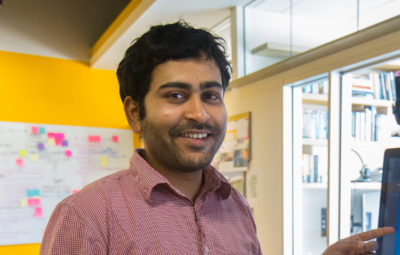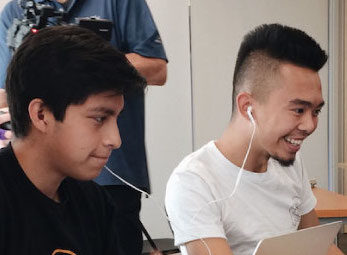Geriatric emergency departments (GEDs) are specialized facilities designed to cater to the medical needs of the elderly. They are a relatively new trend in hospitals, yet little research has been done on their progress and evolution.
In 2016, UC San Diego’s Thornton Hospital received an $11.8 million grant from the Gary and Mary West Foundation to create the San Diego region’s first geriatric emergency room and as of 2017 is now operational. “When we started this project, the geriatric emergency room at UCSD’s Thornton Hospital was already being planned. We wanted to look at the best practices in other existing GED programs that are part of the Geriatric Emergency Department Collaborative. From there we gathered ideas that could be implemented in Thornton hospital,” says Melanie McComsey, a design anthropologist and postdoctoral researcher at the UC San Diego Design Lab. “We needed to determine what different programs were doing, how those programs evolved, and what they learned.”

A joint project between UCSD Health, UCSD Design Lab, and the non-profit West Health Institute, McComsey and her West Health colleague, James Howard, visited four different GED departments around the United States. The pair performed observational ethnographic research at each of the sites, shadowing providers and getting a sense of their job and workflow. Through this, they were able to gain a better understanding of how each GED operated.
One of the most interesting findings that emerged from the project was that each program had developed locally-specific innovations.
“A lot of the most interesting innovations were closely tailored to that specific program and wouldn’t make sense to implement at Thornton,” says McComsey. “We used ‘‘lead user design’ to look at local providers, and in some cases even local patients. Those patients had noticed a need or an opportunity and had done something about it and the idea spread across the hospital.”
An example of an interesting local innovation was a nurse who created his own follow-up program upon noticing that a number of the patients returned to the ER for reasons related to their previous condition.
“What was really cool about this approach was the nurse was able to get permission from the hospital to follow up with patients at home. He would ride his commuter bike stocked with a first aid kit to these patients’ houses to check-in and follow-up after their ER visit,” says McComsey. “It was so successful that the hospital actually institutionalized these follow-up visits. The hospital purchased a van, got the right insurance and approvals, and sent him back to school to become a nurse practitioner which gave him the skill-set to improve patient care.”

Aside from best practices, another goal of the project was to gain insight on the benefits of GEDs and determine whether they would be an effective way to aid the aging population. The number of people over the age of 65 is set to double within the next 50 years, and it’s important to study this demographic and establish programs to allow them to live comfortably in our society.



